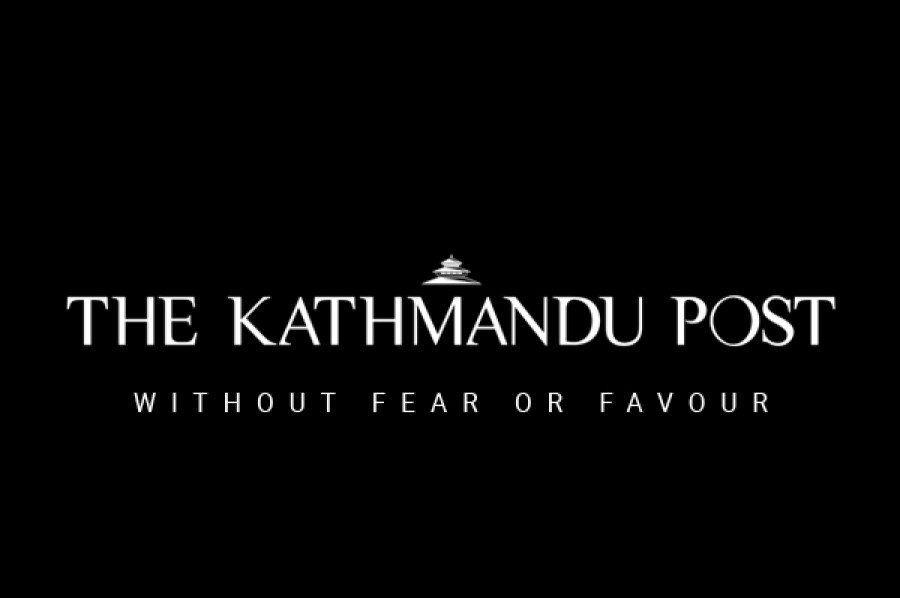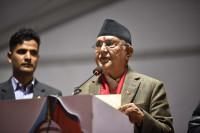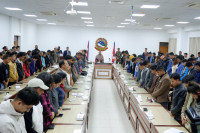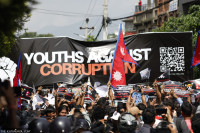Opinion
Drawing the line
Based on geography, population and regional balance there could be five provinces in the hills and three in Tarai
Kl Devkota
The 16-point deal signed by four political parties in early June mentions that Nepal will be divided into eight provinces on the basis of identity and capability. The principles of identity and capability were set by the first Consituent Assembly (CA). The five criteria under identity—ethnic, dialectal, cultural, geographical and historical identities—had come under intense discussion as most discussions solely focused on ethnicity. This caused great confusion among stakeholders and eventually led to the dissolution of the first CA. As for the capability criteria, it consists of four elements: economic interrelationships and capability, development of infrastructure and viability, availability of natural resources and administration accessibility. These criteria of identity and capability have also been incorporated in the draft constitution (Article 60).
Theoritically, it is very easy to divide provinces on the basis of identity and capability. Translating this into action, however, is a herculean task. Initially, when the ruling Nepali Congress and CPN-UML, proposed seven provinces. the opposition consisting of the UCPN (Maoist) and Madhes-centric parties did not seem strongly opposed to this proposal. The conflict between the ruling coalition and the opposition was only related to accomodating the five districts—Jhapa, Morang, Sunsari in the east and Kailali and Kanchanpur in the Far-West—in different federal provinces.
Markets matter
Keeping this disagreement in mind, delineating the provinces demands serious thinking. To begin with, in terms of economic capability, more than two-thirds of the 75 districts in Nepal are poor. So there is a need to combine the poorer districts with the richer ones. For example, the Kathmandu
Valley and its surrounding districts are relatively better-off. Chitwan also fares well in comparison to the rest. Therefore, Chitwan should be combined with districts other than Kathmandu, Bhaktapur and Lalitpur while forming a province. Likewise, districts with huge market centers—Biratnagar, Birgunj, Pokhara, Narayanghat, Butwal, Nepalgunj and Dhangadi—are also richer than other districts. These market centers should also be the basis for demarcating the provinces.
A province will be poor if it only consists of poor districts. As a result, people from such provinces are likely to migrate elsewhere in search of employment and other opportunities. According to the 2011 census, 27 districts in Nepal have a negative population growth rate. It is not only the population of the mountainous and remote hilly districts that has been on the decline but also districts surrounding Kathmandu such as Dhading, Nuwakot, Kavre and Sindhupalchock. Therefore, the future provinces should be designed in such a way that they are a combination of the rich and poor districts and can meet their administrative expenses from their own revenue.
Revenue to sustain
The draft constitution has proposed that the central government be given the responsibility of collecting customs duty, value-added tax, corporate income tax and personal income tax. Similarly, sources of local-level revenue such as entertainment tax, vehicle tax, service fees and tourism fees have been proposed for both provincial and local governments. The revenue headings presently received by the local bodies, namely land registration, electricity, mountaineering, and forests have been proposed for all three levels of government—federal, provincial and local.
As per the 2013/14 Economic Survey, 86 percent of the government tax revenues consist of customs duty, value-added tax, corporate income tax and personal income tax. The report of the Financial Comptroller General Office for the Fiscal Year 2070/71 further mentions that of the total government revenue, the districts that collect the highest amount of revenues are Kathmandu Valley districts (43.80 percent), Parsa (26.82 percent), Rupandehi (7.89 percent), Morang (5.80 percent), Chitwan (2.49 percent), Bara (1.95 percent), Jhapa (1.77 percent), Sindhupalchok (1.48 percent) and Banke (1.44 percent). The share of rest of the districts is below one percent.
Based on the data of the Fiscal Year 2070/71, 15 districts in the country only contribute 0.5 percent to the total government revenue while 17 districts collect Rs 1-94 billion. Ninety-three percent of the revenue collected by the central government thus comes from one-third of the 75 districts. Given this reality, no more than four provinces will be economically viable even if provincial governments—instead of the central government as mentioned in the draft constitution—get to collect revenue from these various sources.
The collection of revenue at the central and local level is no different. Currently, the District Development Committees that have a higher population and abundant natural resources collect a satisfactory level of revenue. The districts can be divided into seven markets centers according to central and local revenues. The future provinces and their headquarters can be designed on these criteria. They are Biratnagar (Province 1), Birgunj (Province 2), Kathmandu (Province 3), Pokhara (Province 4), Butwal (Province 5), Nepalgunj (Province 6), and Dhangadi (Province 7). Lastly, the eighth province should be demarcated on the basis political understanding.
Three and five
Further, Article 88 of the constitution mentions that there will be 165 constituencies based on geography, population and regional balance. If we divide the 165 constituencies by eight then we get 20.62 constituencies in each province. As per the criteria set in Article 88, let us give 50 percent weight for population, 25 percent weight for geography and 25 percent weight for regional balance. For geography, I have adjusted land with a proposition that there should be at least 20 people per square kilometer. For example, Dolpa district is 36,700 sq kms. But after introducing the people per square kilometre provision, Dolpa is reduced to 1,835 sq kms. Further, I have used the remoteness index designed by Local Bodies Fiscal Commission as a proxy of regional balance.
As per this index, the highest and the lowest values are 2.5 and 1.0 respectively. The resultant calculations show that only Humla district has an index of 2.5 while the indexes of Dolpa and Mugu are both 2.50.
The values for the remaining districts lie between 1.5 to 1.0. According to this method, there should be 61 consituenties in the Tarai while the remaining 104 constituencies should lie in the hills and the mountainous districts. That way, on average there should be 3.04 constituenties in every district in the Tarai and 1.89 consitutenties in every hilly or mountainous district. Based on this analysis there will be five provinces in the hills/mountains and three in the Tarai.
As for the contested districts of Jhapa, Morang and Sunsari in the east, their composite index is only 6.49 implying that a separate province only consisting of these districts should not be formed. These districts should be either placed together with the remaining districts of Mechi and Koshi zones (10 districts) or the remaining districts upto Dhanusha and Mahottari (seven districts). In case of Kailali and Kanchanpur, they should be merged with the remaining districts in the Far-West.
Devkota holds a PhD in fiscal decentralisation




 16.12°C Kathmandu
16.12°C Kathmandu










